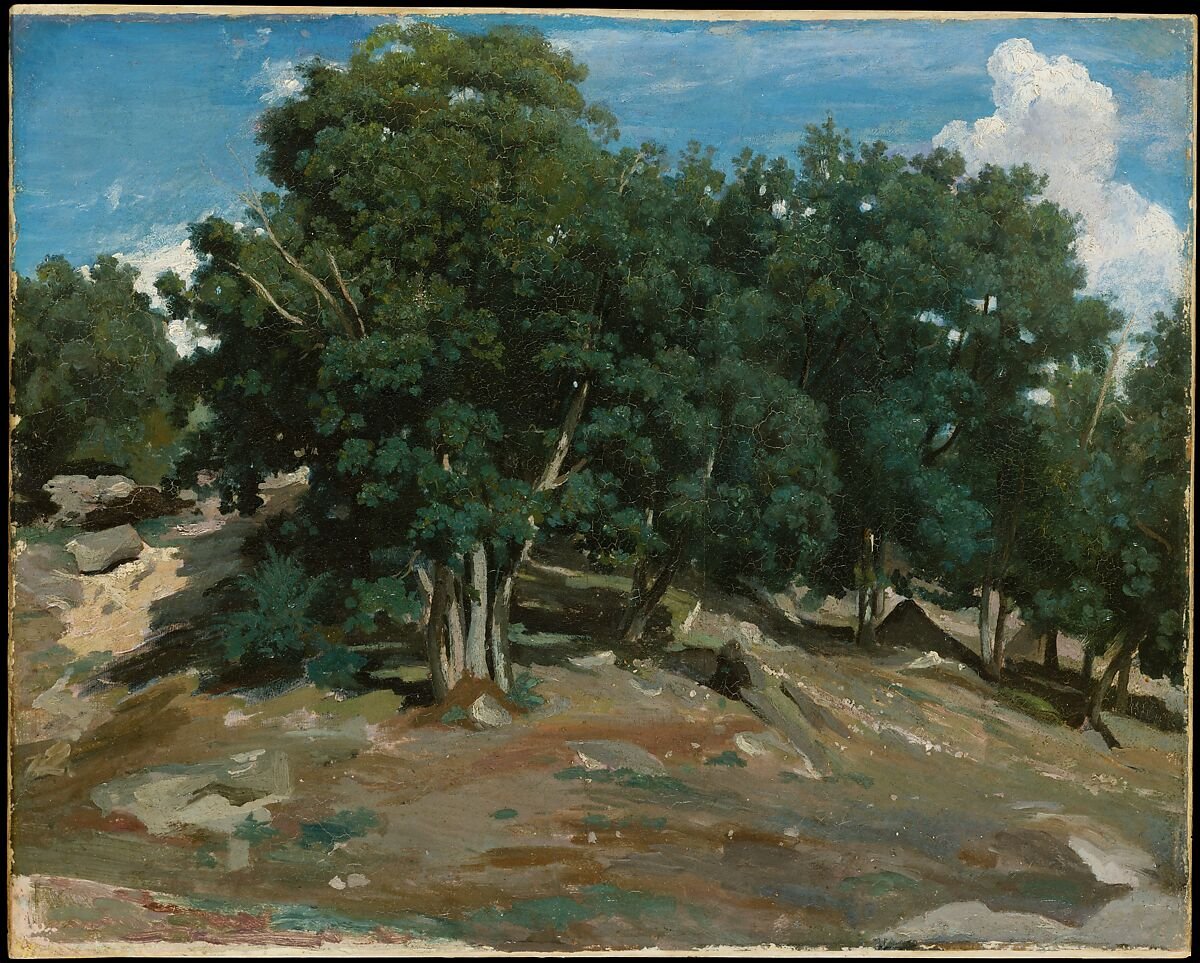
The painting titled "Fontainebleau: Oak Trees at Bas-Bréau" by Camille Corot, created between 1832 and 1833, portrays the serene and peaceful atmosphere of the forest of Fontainebleau. Oak trees that are rising into the sky characterize the depicted landscape. Taking the majority of that foreground, they serve as the primary focus of the composition. The artist portrays these trees with impressive strength, conveyed by their strong roots and expansive branches. The indirect light reaches the upper layer of leaves, generating complex patterns on the forest ground. The background presents a composition characterized by detailed brushwork, indicating a slow transition of the forest into the horizon. The gradual development of detail in this composition adds a sense of depth, guiding the viewer's gaze from the prominent oak trees in the foreground to the more indistinct forms of the trees and bushes in the background. The landscape does not include any human presence, emphasizing nature's grandness while reflecting the Barbizon School's preoccupation with the direct study of the surrounding environment.
Moreover, being often associated with Barbizon school but not officially a member, Corot is sometimes called “the father of modern landscape painting.” His work and approach to painting nature influenced the Impressionist movement, and he mentored several younger artists, including Camille Pissarro and Berthe Morisot. Before the Barbizon School, the landscape was often considered merely a backdrop for historical or religious scenes. Therefore, Corot and the Barbizon artists contributed to the elevation of the landscape as the primary subject.